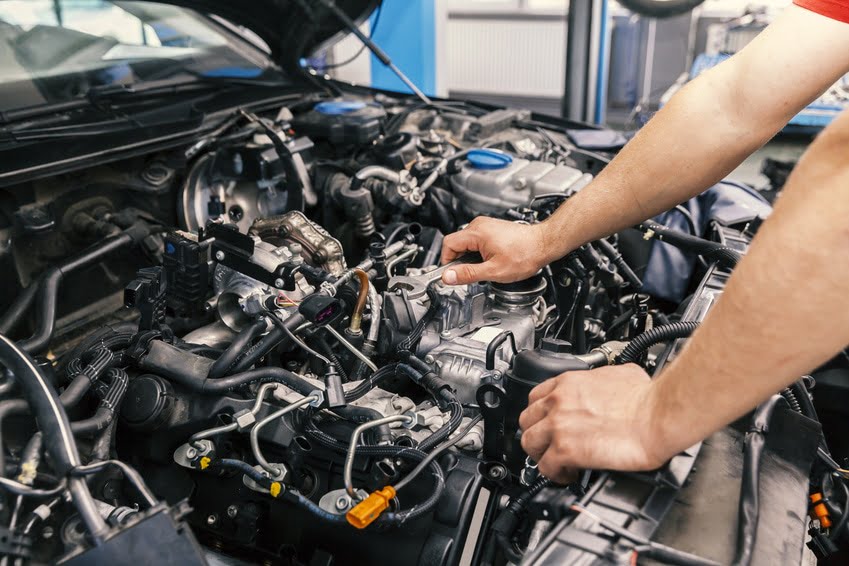Not only is it satisfying to understand how something works, it can make it much easier to diagnose and fix problems when they occur. This is especially true of cars, so the more you know about what’s going on beneath the bonnet, the better.
In this guide, we offer a quick refresher course in how engines work, before taking an in-depth look at their various configurations and layouts.
How Do Car Engines Work?
The simplicity of turning a key to start a car means that engines are often taken for granted. Few drivers spare a thought for all the technological wizardry taking place beneath the bonnet as they drive from A to B, but the engine is actually a hugely impressive feat of engineering.
Engines rely on internal combustion; small, controlled explosions that generate power. This is the effect of igniting the fuel-air mix in the car’s various cylinders, a process which happens thousands of times a minute, helping the car to move.
The process of powering the engine is called the combustion cycle. In most cases, the cycle has four steps or ‘strokes’ (hence the name four-stroke engine). These include intake, compression, combustion, and exhaust. Below, we take a look at how these individual strokes contribute to the combustion cycle in a car’s engine.
- Intake: As the pistons move up and down with the motion of the crankshaft, they reach the valves mounted on the camshaft. As the piston moves down, the timing belt rotates the camshaft, causing the valves to open and release the fuel-air mixture. This is called intake.
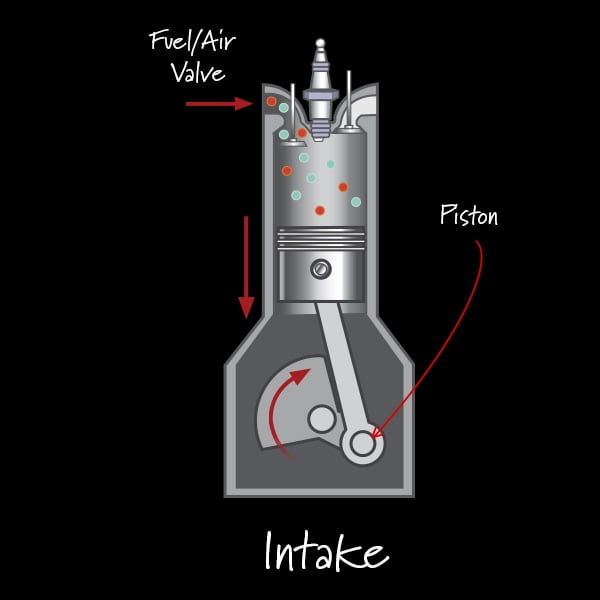
- Compression: The compression stroke occurs as the piston moves upwards, forcing the fuel-air mix into a tight space.
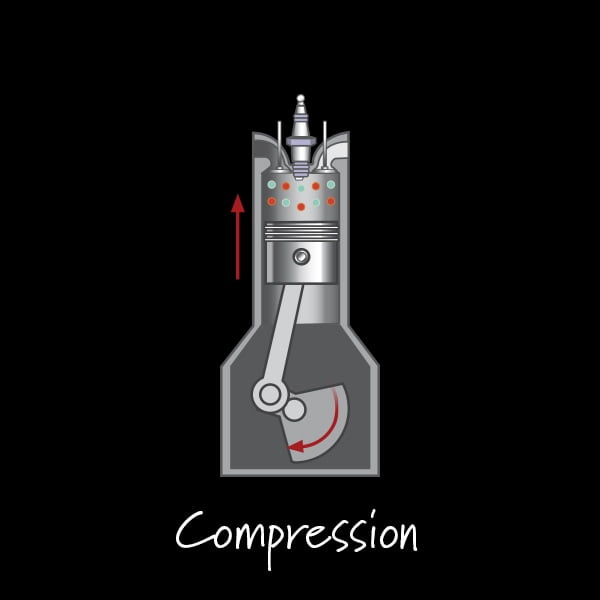
- Combustion: Just before the piston moves down again, a spark is produced by the spark plug, igniting the fuel-air mix and causing a small explosion. This forces the piston down rapidly, producing the energy to power the engine.
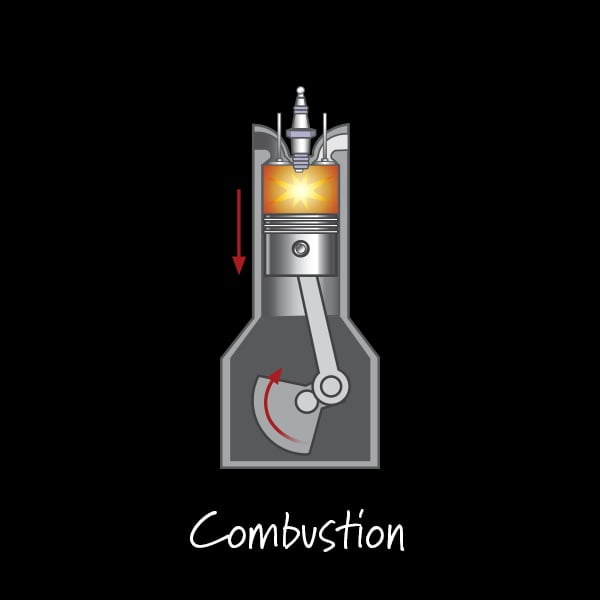
- Exhaust: As the piston reaches its lowest point, the exhaust valve opens. When the piston moves back up, it expels the gases created by the explosion down the exhaust valve. At the top, the exhaust valve is closed, and the process is repeated.

This is the combustion cycle found in one cylinder of a four-stroke internal combustion engine. Of course, cars have multiple cylinders of different capacities, as well as different configurations and layouts depending on the type of car and its power output.
Common Car Engine Layouts
Car manufacturers use different cylinder layouts for certain engines, mainly for the purposes of adding more power or making sure the engine will fit in a tight space under the bonnet. Here, we look at the most common car engine cylinder layouts.
Straight
In a straight engine, the cylinders are arranged in a line parallel to the car from front to back. This arrangement allows for more cylinders, and straight engines are commonly found in powerful saloon cars, such as BMW and Mercedes.
Inline
An inline layout is when the cylinders are arranged side-by-side in an upright position across the engine bay, perpendicular to the car. This allows for a small, compact engine, with other components (radiator, battery, cooling system) fitted around the outside. Inline engines are the most common form of engine, and are found on most hatchbacks and small family cars.
V
A ‘V’ engine refers to the shape at which the cylinders are arranged when viewed from the front. The cylinders in a V engine are mounted on their side at a 60° angle, with two rows facing outwards, connected by a crankshaft at the base of the V shape. Because it’s possible to squeeze a lot of cylinders onto a V-style engine, they’re commonly found on supercars and other premium vehicles.
Flat
A flat engine layout is when the cylinders are mounted horizontally, with two rows facing outwards. Though not very common, flat engines are highly-regarded for offering a low-centre of gravity within the engine bay, which aids handling. One of the largest manufacturers of flat cylinder engines is Porsche, who use a flat-six engine in their legendary 911 sports car.
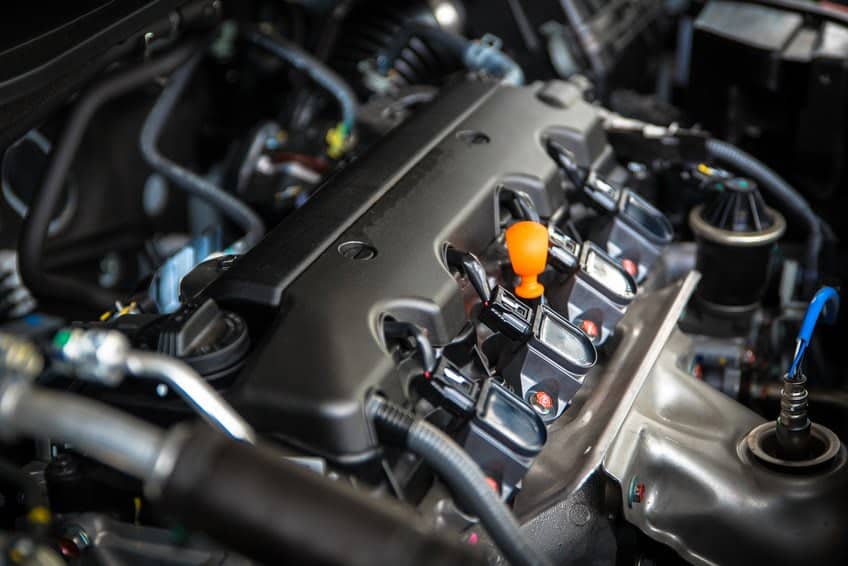
Engine Cylinder Configurations
Once upon a time, the more cylinders a car had, the greater its performance – but that’s no longer true. The development of powerful fuel injection systems and turbochargers means that cars with fewer cylinders are able to compete with larger engines. Here, we take a look at the common engine cylinder configurations, and on which sort of cars they’re likely to be found.
Twin-Cylinder
Twin-cylinder engines are very rare, because they offer a low power output and capacity. However, some manufacturers are now using turbochargers to make small, eco-friendly twin-cylinder engines. The Fiat TwinAir is a great example of this, and can be found on cars such as the Fiat 500 TwinAir and the Fiat Panda Aria.
Three-Cylinder
Three-cylinder engines are used on small cars, although the introduction of turbochargers has meant they’ve started appearing on larger family hatchbacks, such as the Ford Focus. Three-cylinder engines produce a distinctive burbling noise and are known for their shuddering vibration, which is a result of the odd number of cylinders affecting the engine’s balance.
Four-Cylinder
Easily the most common configuration, four-cylinder engines are found on a large majority of small to mid-range cars, and are almost always set up in an inline layout. Four cylinders offer a good amount of engine output, and can be made very powerful with the introduction of a turbocharger.
Five-Cylinder
Five-cylinder engines are very rare, and suffer a similar vibration feel to that of a three-cylinder engine. Volvo is one manufacturer which regularly uses five-cylinder engines, because the vibration effect is offset by the car’s comfort and refinement.
Six-Cylinder
Six-cylinder engines are found on high-end performance and sports cars, and are commonly set up in a V or straight engine layout. Historically, six-cylinder engines weren’t considered all that powerful, but now, thanks to the turbocharger, they’re fitted to some of the world’s most powerful cars.
Eight+ Cylinders
Cars fitted with eight or more cylinders usually fall into the supercar bracket, given their massive capacity and power output. They’re normally set up in a V formation, hence being referred to as V8, V10 or V12. Until recently, V12 was the largest engine available, but that all changed with the arrival of the super-quick Bugatti Veyron, which boasts sixteen cylinders.
Whether your car has two cylinders or twelve, Redex fuel system additives can aid performance and fuel economy. Our petrol and diesel fuel additives are developed to clean the fuel system, reduce emissions and significantly improve the performance of your engine. For more information, visit the homepage.
